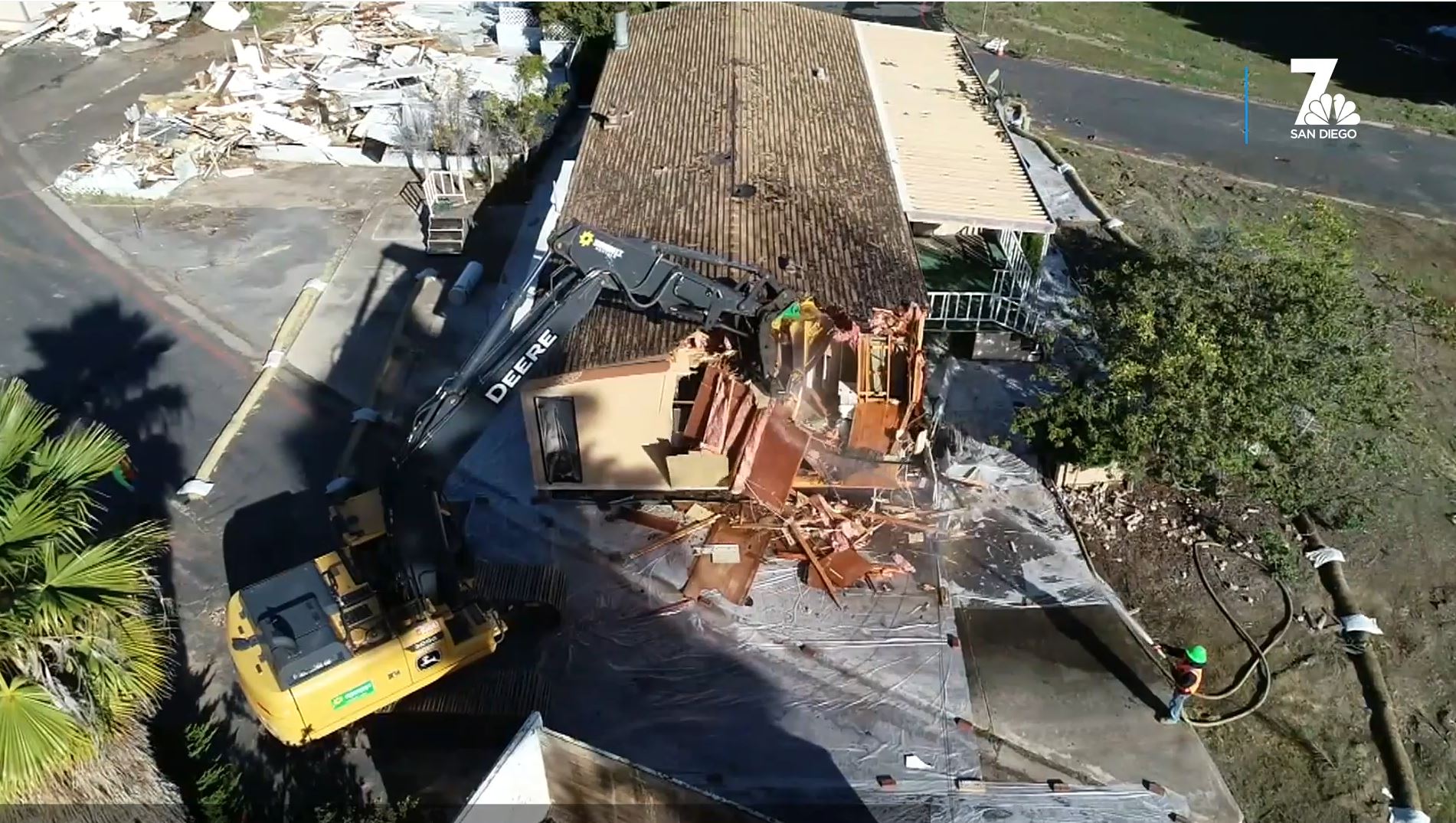
As San Diego redevelops its Mission Bay Park Master Plan, several local organizations are calling on the city to provide replacement fields and facilities, officials said Wednesday.
Under the city's draft plan for De Anza Cove, proposed buffer zones along Rose Creek to preserve habitat could impact sports fields and facilities. These zones were not part of the original 1994 Master Plan but were included by the city as part of its De Anza Natural wetland restoration proposal in March.
ReWild Mission Bay, the Mission Bay Youth Field Association and Pacific Beach Tennis Club said they agreed with the city on the ecological benefits of the buffer zones but wanted replacement facilities.
Redeveloping De Anza Cove
Get top local stories in San Diego delivered to you every morning. Sign up for NBC San Diego's News Headlines newsletter.
"If environmental funding is found and the wetlands restoration project is commenced, the Rose Creek buffer zone from Mike Gotch Memorial Bridge to Garnet Avenue will not be disrupted until replacement youth fields and tennis courts equal to or better than the affected facilities are constructed in their new permanent location within the De Anza Natural planning area," said ReWild Mission Bay project director Andrew Meyer and chairman Billy Bonelli of the Mission Bay Youth Field Association.
According to the city, Rose Creek buffer areas will improve water quality and protect habitat and park assets from storm surges and sea level rise.
The Mission Bay Park Committee is expected to consider a recommendation on the city's De Anza Natural Plan on July 11, following several weeks of weekly meetings of the De Anza ad hoc Committee. The San Diego City Council is expected to consider approval of the De Anza Natural Plan this fall, but it has not yet been docketed at council or at the city's Environment Committee.
Before these plans become final, the Mission Bay organizations demanded consideration.
Made up of the Pacific Youth Soccer League, Coastal Bay Softball and Mission Bay Youth Baseball, the Mission Bay Youth Field Association hosts year-round youth sports at the Bob McEvoy Fields in Pacific Beach.
"Among our three-member organizations there are over 1,000 kids playing soccer, softball and baseball every six-month season at Bob McEvoy Fields," Bonelli said. "If the city is going to add buffer zones along Rose Creek, affected athletic facilities must be relocated by the city to a new, permanent location prior to the installation of the buffers."
The Pacific Beach Tennis Club has also come on board with the inter-organizational agreement, signed late Tuesday.
"Continuity of the existence of the racquet sports facility at its current or larger size is critical," club board member Joanna Hirst said. "With its 500 tennis members and hundreds more pickleball players, the P.B. Tennis Club has been located in De Anza Cove for over 60 years, and must also continue to have a home within the De Anza Natural planning area."
Andrew Meyer, conservation director with San Diego Audubon, said there is space in the section of Mission Bay for natural and recreational interests to co-exist.
For its part, the city has expressed openness to hear out community organizations and recreational groups.
"The city will work with community-serving public recreation facility operators to plan for the future of the facilities and will design and phase development in a manner that minimizes disruption to active recreation access," the city's De Anza Natural proposal reads. "Buffer zones and other land uses proposed for the site of existing recreation facilities should be implemented after these facilities have been modified, moved, or replaced for continued use."
The March amendment to the proposal gave hope that the facilities could be moved and wetlands restored at the same time.
"We know how important De Anza Cove is to our residents and visitors and we want to make sure the area has a bright future by retaining recreation while also using its unique features for a more natural habitat and to prepare us for the effects of climate change," City Planning Director Heidi Vonblum said in March. "We look forward to ongoing input to ensure we make it a place for all San Diegans to enjoy."
The De Anza Natural proposal includes space for low-cost visitor accommodations such as camping and recreational vehicle facilities, which set amid expanded and restored coastal wetlands, "will provide exciting new opportunities for eco-tourism and environmental education," a planning department statement read.
Open space could also host sports and recreation facilities such as golf, tennis courts and ball fields.
De Anza Natural as proposed would provide more than 220 acres of wetlands and use "nature-based solutions" to protect these resources from the effects of sea level rise.



